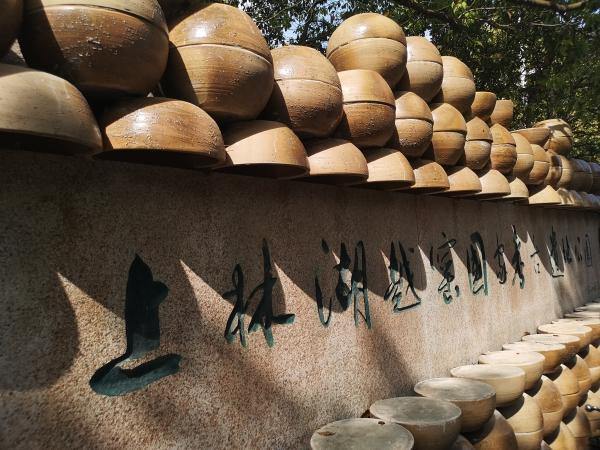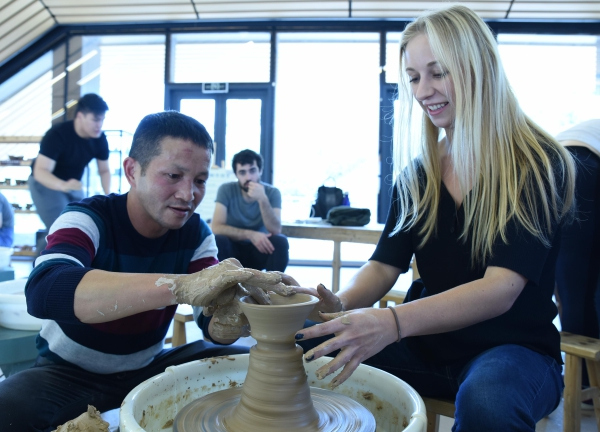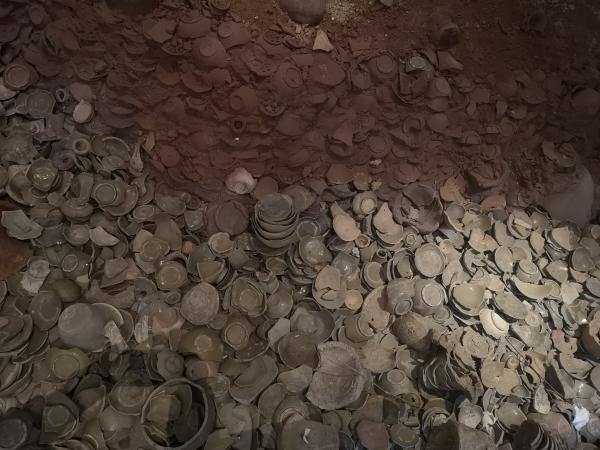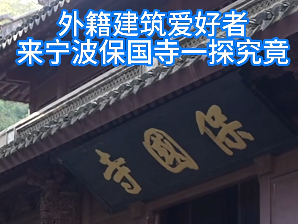Shanglin Lake, a call card of Cixi in eastern Zhejiang, is about 15 kilometers south of Cixi County’s capital. Surrounded by hills, the lake is a gateway to serenity and to a splendor that dates back to about 1,000 years ago, as testified by numerous porcelain shards half buried in the lake bottom sloping down from the shores. These porcelain shards are a witness to a time when the hills were home to a cluster of kilns. At present, there are about 100 ancient kiln sites around the lake.

This string of kilns represents one of the earliest celadon makers in China’s history of the ceramic industry. The ceramic wares produced around Shanglin Lake are generally known as “secret-color porcelain”, which refers to the colors of the glazes on finished products. The secret colors might come from formulas and procedures used in glaze making and firing. In history, some official supervisors were stationed at Shanglin Lake to oversee the production of best-quality porcelain products for imperial houses and government offices.

The kilns are known as Yue Kiln, a distinct name for the kilns that lasted for about 1,000 years in this part of Zhejiang, which for a long time in history was the land of the Yue state. The kilns around Shanglin Lake started the Yue Kiln tradition and were among the best producers of celadon in history. By the way, Zhejiang is still known as Yue in literary writings.Yue Opera, one of the best known regional opera genres in China, is so named in honor of the ancient state in history. The Shanglin Lake Yue Kiln site was inscribed onto the third list of national key cultural relics in January 1988.

At the foot of Kaolao Mountain, which is a major scenic attraction of the lake zone, spreads the Shanglin Yue Kiln Archaeological Park and a museum that showcases the beauty of the secret-color porcelains. On view at the museum are a lot of exhibits highlighting a full range of shapes, colors, and functions of secret-color porcelain objects. These ceramic wonders showcase the passion and artistry of the past celadon craftsmen and remind visitors of the poems about the celadon splendors by ancient and contemporary poets. The shards seen on the shores and in the lake are the remains of the products which were considered as failures and therefore destroyed.
Kaolao Mountain is more than the home to the museum and the park. Waxberry trees are part of the forest in the mountain. These waxberry trees produce the best quality fruit in early summer days. Also in the mountain are bamboo groves and a bubbling stream with grotesque boulders scattered here and there. In early springtime, bamboo shoots can be seen in the bamboo groves.

Shanglin Lake in the Song Dynasty (960-1279) was part of Yuyao. In 1954, five years after the founding of the People’s Republic of China, the region became part of Cixi. Yuyao and Cixi are both part of Ningbo, a harbor city in eastern Zhejiang. The lake took form in the Song Dynasty after Xie Jingchu (1020-1084), governor of Yuyao County, had a 9-km dike built there. The county governor may be little known to most people, but his son-in-law Huang Tingjian (1045-1105), a prominent poet and calligrapher of the Song, is better known in the history.





